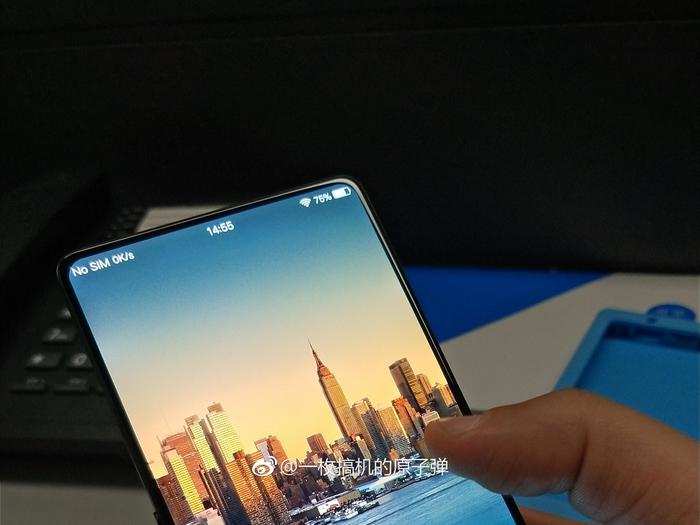
An image shared by Slashleaks last week showcased a prototype of a truly bezel-less smartphone by the Chinese manufacturer, Vivo. The device also has no visible home button and leads us to assume that it is similar to the Vivo X20 Plus, which the manufacturer announced in January as the first mobile device with an in-display fingerprint sensor.

Samsung recently registered a patent for a smartphone with a "full screen-filling display." Images included with the patent suggest there could be a component at the top of the display, which LetsGoDigital refers to as a top notch. However, it could also be a cut out for a front speaker. There is no indication from the images that the screen isn't continuous.

Apple's iPhone line looks like it will feature the TrueDepth camera system (a.k.a. "the notch") for the foreseeable future, and Google is also rumored to be working on a slew of smartphones with top notches.
A new report from Bloomberg suggests Google's upcoming Android P software update may include optimization for smartphone designs with notches at the top of the phone, like the iPhone X. The tech giant seems to be preparing its operating system for a host of more modern smartphone designs, not only anticipating Android devices with top notches but also devices with flexible displays and multiple screens.

Apple may have popularized the top notch with the iPhone X, but it was the Essential Phone — the brainchild of Android co-founder Andy Rubin — that first brought the idea to public attention. In an effort to maximize the device's display, the Essential Phone features a top-notch to house its front-facing camera.
However, the smartphone released with Android 7.1.1 Nougat, which is not optimized for the top-notch design. This left several applications unable to expand around the notch and ultimately truncated the overall width of the usable screen, the opposite intent of a full-screen design. The current Android 8.0 Oreo software, which released after the Essential Phone hit the market, was similarly not optimized for unique smartphone designs.
The iPhone X has a similar issue in that not all apps are optimized to wrap around its top notch. Like Google, this may be a pain point that Apple addresses in a future software update.

The design suggests Samsung would consider a design closer to the Android-run Essential Phone than the iPhone X.
There is no guarantee that Samsung would ever release a device with a top notch since patents are more concepts than actual devices in a manufacturer's pipeline. They are, however, a good indication that Samsung is keeping its options open for how it may develop future devices.
There are also reports that Samsung could release a smartphone with a display that can fold in half. Such a device would likely also benefit from running Google's upcoming Android P software.
 A couple accidentally shipped their cat in an Amazon return package. It arrived safely 6 days later, hundreds of miles away.
A couple accidentally shipped their cat in an Amazon return package. It arrived safely 6 days later, hundreds of miles away. A centenarian who starts her day with gentle exercise and loves walks shares 5 longevity tips, including staying single
A centenarian who starts her day with gentle exercise and loves walks shares 5 longevity tips, including staying single  2 states where home prices are falling because there are too many houses and not enough buyers
2 states where home prices are falling because there are too many houses and not enough buyers "To sit and talk in the box...!" Kohli's message to critics as RCB wrecks GT in IPL Match 45
"To sit and talk in the box...!" Kohli's message to critics as RCB wrecks GT in IPL Match 45
 7 Nutritious and flavourful tiffin ideas to pack for school
7 Nutritious and flavourful tiffin ideas to pack for school
 India's e-commerce market set to skyrocket as the country's digital economy surges to USD 1 Trillion by 2030
India's e-commerce market set to skyrocket as the country's digital economy surges to USD 1 Trillion by 2030

Copyright © 2024. Times Internet Limited. All rights reserved.For reprint rights. Times Syndication Service.